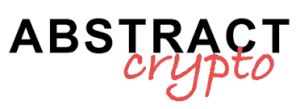Crypto news in Circle’s house: on the one hand, the launch of the native USDC stablecoin on the Polygon network and, on the other, the collaboration with crypto-exchange Coins.ph to promote remittances denominated in USD Coin.
Circle and the launch of the native USDC stablecoin on the Polygon network
A few days ago, Circle announced the official launch of native stablecoin on the Polygon PoS network.
Basically, the existing form of USDC on Polygon is the “bridged” form, known as USDC.e, or USDC that has been linked to Ethereum. That bridged USDC, USDC.e, was not issued by Circle.
What has happened now, however, is the launch of USDC in its “native” form on Polygon, and thus officially issued by Circle and redeemable 1:1 in U.S. dollars.
The native stablecoin on Polygon blockchain, will allow developers to build on a more stable and reliable foundation for apps involving USDC, compared to the previous situation where the bridge was in place.
Specifically, companies and developers interested in designing mainstream user experiences can now choose Polygon PoS USDC for payments, remittances, exchanges, loans and more.
Circle and collaboration with Coins.ph to promote remittances denominated in the USDC stablecoin
Another achievement at Circle is the new strategic partnership with the Philippines’ crypto-exchange, Coins.ph.
In practice, the goal is to promote financial inclusion for the 18 million Filipino users of Coins.ph. who use USDC for their remittances. In fact, the use of blockchain is playing a growing role in facilitating cross-border payments and remittances around the world.
In contrast to the traditional system, in fact, USDC-denominated remittances would be faster and cheaper, lowering barriers to entry even for the unbanked.
Not surprisingly, according to the World Bank, the average cost of sending a $200 remittance to the Asian region in 2022 is 5.7%. In the Philippines, remittances are even more challenging for the unbanked, who accounted for 44% of the adult population in 2021, according to the country’s central bank.
In this regard, Wei Zhou, CEO of Coins.ph., said:
“Coins.ph’s partnership with Circle aims to demonstrate how USDC can provide a faster, lower-cost and more accessible remittance option for our 18 million Filipino users and their families and loved ones abroad. Together with our recent innovations in Web3 technology, this initiative demonstrates Coins.ph’s commitment to providing users with access to innovative services that have a tangible impact on their daily lives.”
USDC is more widely used outside the US, but its market cap is falling
In mid-August, Circle co-founder and CEO Jeremy Allaire had revealed that 70% of the adoption of the USDC stablecoin is outside the United States of America.
This happens despite the fact that the USDC stablecoin is pegged to the U.S. dollar and that its issuing company is U.S.-based Circle.
Specifically, USDC continues to make strong progress not only in Asia, but also in Latin America and Africa.
Despite this expansion beyond the U.S., the second-largest stablecoin by market cap is losing share. And in fact, in the past year alone, USDC’s market capitalization has fallen by nearly $20 billion.
In fact, at the time of writing, USDC’s market cap is just $25 billion, down from $45 billion in October 2022. But this is not a market trend. On the contrary, the first stablecoin by market cap, Tether (USDT), has seen growth in its market capitalization, which, at the time of writing, is worth $83.5 billion, up from $65 billion a year ago.



